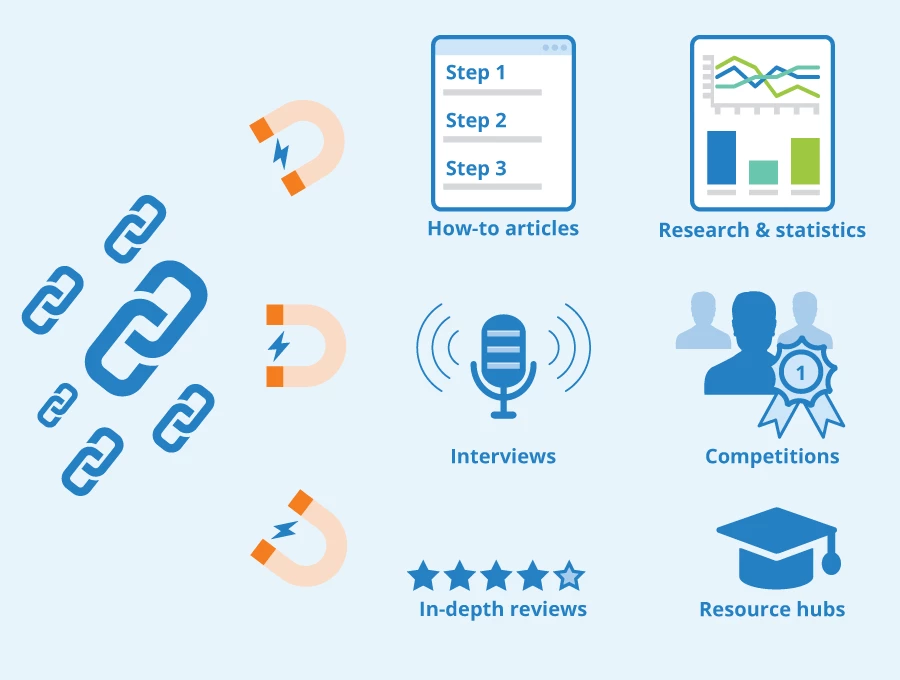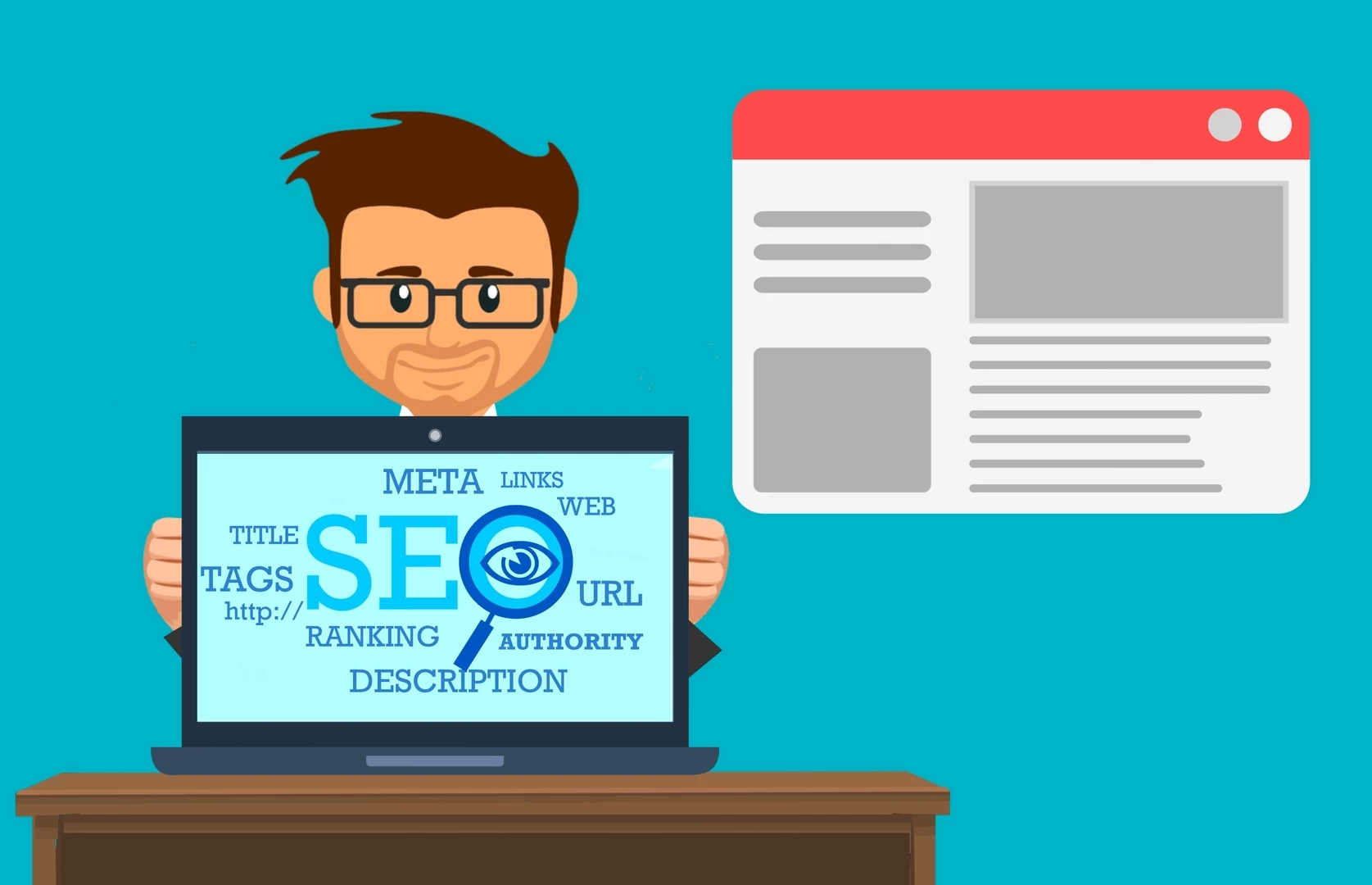Business
Tips For Beginners For Placing Their First Trade On MT5

Online trading can be an outstanding choice for investment if you have a few hours to spare every day. Reputed trading platforms like MT5 offer a plethora of investment opportunities to experienced and new investors. Visit multibank
The varied set of features available on the MT5 platform helps every trader, new or experienced, to make the most of the existing market conditions. The followings are a few factors every beginner should keep in mind before getting started with the trading process.
Careful Choice Of Financial Instrument
A multi-asset trading platform like MT5 offers several choices to investors. While for an experienced trader, these alternatives can be a blessing, for beginners, the varied assortment can be quite confusing.
As a beginner, you should always pay more attention to the choice of financial instrument. For example, you need to figure out the currency pairs that are dominating the rest of the market. For bitcoin trading, understanding the complex relationship between crypto and the US dollar remains a must.
Similarly, for metal trading, you need to know the fundamentals of the precious metal trading market before you invest. Therefore, trading should start with some education. The multiple features of this platform can help you trade more effectively only if you gain learn how to use them for your benefit.
MT5 offers its users seven asset class types, indicators, graphical objects, several trading tools, 6varieties of order types, market depth and numerous automated strategies.
To exploit all of these features optimally to your benefit, you need to understand the role of each of these features at least superficially, if not in detail. Once you begin trading using MT5’s outstanding features, you will learn more about the process for sure.
Adopting The Best Trading Strategy
For different financial instruments, the trading strategies should be different as well. You cannot adopt the same trading method for all your transactions. The metal trading market does respond to external stimuli just the way the forex market does.
In fact, the different markets have different factors responsible for their price alterations. Therefore, an in-depth understanding of the markets is a prerequisite for investing in any of them. For a beginner, this could be an impossible task.
Comprehending the ways of the volatile market takes a lot of time. Therefore, beginners should stick to trading plans already tested and tried by others. Copy trading is undoubtedly one of the best choices for beginners in the field of forex trading or crypto trading.
You can also take the help of the simulated account (demo account) to test the validity and efficiency of a particular trading strategy in a certain market. In short, nothing experimental or out of the box should lure you when you start your transactions.
The very characteristic of the volatile markets make every investment equally vulnerable to high risks. For beginners, the risk potentials remain higher without any doubt. The unpredictable moves of the market remain one of the major sources of this volatility.
If you wish to avert high-risk elements, make sure to keep a close watch over the market. Try to figure out the trends involved and how a particular market responds to certain external factors. For example, check how the gold prices and forex market responds to an announcement of an election or a rise in oil prices.
You will find that both instruments respond to such changes but never in the same way. Keeping a close watch on such patterns will help you gain insight into the market. With this knowledge, you can make intelligent investment decisions using the excellent set of tools available on the MT5 platform.
No matter which financial instrument you choose for your first trade, you need to understand how it works in its environment before commencing the task. For a safer play, you can always copy the moves of the seasoned traders and follow their footprints.
However, nothing guarantees zero risk when it comes to speculative market transactions and you need to keep this in mind from the very first day.
Accessing Demo Account
Demo accounts are more like warming-up sessions before the final match. Every professional invests some time in practising the task they are supposed to do the next day or week.
When you plan to begin trading online, make sure to get yourself acquainted with the look and feel of the platforms to ensure zero time wastage and confusion.
To practice transactions on a simulated platform, you need to have access to one such account. Any reputed forex broker can help you get one. On these demo platforms, you will find all the features present in the real platforms.
Go through each category diligently to get a hang of the entire setup and process. The features play a critical role in making your trading actions flawless and timely.
Therefore, invest as much time as possible to learn about each feature before you finally start placing trades on MT5. Once you gain confidence and pace, you can try placing an order using MT5.
Trading Parameters
For beginners, safeguards are necessary while trading for the first time. Regardless of your choice of the new order, you should select a trading parameter to make your transaction safer.
These parameters include take-profit orders, stop-loss orders, one-click trading, etc. For both open market trading and pending orders, you can use any of these parameters.
Choose a Broker
Your choice of a broker remains as critical as all the factors mentioned above for making your first trade successful. A reputed and experienced broker can help you at every step and teach you things you need to know as a trader.
If the market behaves in an unexpected manner, your broker can help you choose the right trading path using their experience and expertise. Always look for a licensed and regulated broker for the task. Know more multibank group
In short, MT5 offers a wholesome trading experience to everyone. For beginners, this platform could be an excellent source of market education as well. With a little background work and an efficient broker, anyone can place the first trade on MT5 effortlessly and successfully.
Also Read: Monoprice 110010 Headphone Detailed Review

Business
How Businesses Can Foster Safe and Inclusive Workplaces

What Is a Safe and Inclusive Workplace?
Creating a safe and inclusive workplace is an ongoing commitment that requires intentional policies, continuous education, and accountable leadership. When organizations prioritize respect, equity, and psychological safety, employees are more engaged, productive, and innovative. Integrating wellness resources, such as opportunities to learn about nutrition Clarkston, MI, further supports employees’ overall well-being and reinforces a culture of care. By measuring progress, addressing challenges proactively, and embedding inclusion into everyday practices, companies comply with legal standards and cultivate a culture where everyone can thrive—driving long-term success for both people and the business.
Why Company Culture Matters
A company’s culture is the collective personality that shapes how people interact, collaborate, and solve problems. Company culture is rooted in visible behaviors, day-to-day operations, written values, and the subtle ways leaders and colleagues interact. An inclusive culture championed by management sets a positive tone and signals to staff that respect, equity, and fairness are non-negotiable values.
A positive culture makes it easier for people of all backgrounds and abilities to feel seen and heard. Leaders who uphold these principles ensure that everyone, from interns to executives, understands what inclusion looks like in everyday situations.

Building Effective Policies
Robust, visible policies underpin successful, safe, and inclusive workplaces. These must extend beyond anti-discrimination language to address the diverse needs of employees, such as accommodations for religious practices, disabilities, gender identity, and parental responsibilities. Policies should be developed with input from employees and subject-matter experts to ensure they are practical, relevant, and current.
- Clearly define what safety and inclusion mean for your business and sector.
- Create straightforward reporting procedures, ensuring every team member knows how and where to report issues.
- Outline fair investigation processes and consequences for policy violations to reinforce accountability.
- Review all policies annually and communicate updates regularly to reinforce expectations.
To foster trust, ensure that all documents are easily accessible and comprehensible, and provide training that enables policies to be effectively implemented in real-life situations.
Training and Education Programs
Continuous education is essential for changing mindsets and behaviors. Training efforts focusing on diversity, equity, and inclusion should go beyond awareness-raising, helping team members understand how to call out exclusionary practices and become effective allies. Regular workshops, simulations, and discussions of real-world scenarios ensure that information sticks and leads to lasting change.
Leadership and Accountability
Leadership’s role is critical in setting expectations and modeling desired behaviors. Senior management and supervisors must be trained to recognize unconscious biases, address issues swiftly, and celebrate team successes related to inclusion. Regular performance reviews that assess leadership’s inclusivity ensure ongoing commitment.
Transparency in how issues are handled and shared success stories fosters a sense of collective responsibility. When accountability is embedded at all levels—from frontline workers to executives—employees understand that safe and inclusive behavior is a non-negotiable standard.
Measuring Progress and Success
Determining if policies and programs are effective starts with clear targets and ongoing evaluation. Many organizations use employee surveys, pulse checks, or third-party audits to collect meaningful qualitative and quantitative feedback. These insights reveal whether staff feel safe and valued and can surface areas requiring further improvement.
Regularly sharing progress fosters transparency and trust, making clear that employee voices directly shape company priorities.
Common Challenges and Solutions
Roadblocks may arise during efforts to build a safe and inclusive environment. Resistance to change, a lack of resources, or legacy behaviors can create setbacks. Overcoming these challenges requires intentional communication, dedicated resources, and ongoing reinforcement of the business case for inclusion.
- Resistance to Change: Address skepticism with transparent communication and real-life workplace benefits.
- Unconscious Bias: Combat through tailored training sessions and reflective leadership assessments.
- Resource Constraints: Start small by celebrating early wins and leveraging free external toolkits and resources.
Keeping communication channels open and fostering psychological safety helps sustain engagement and momentum, helping organizations stay adaptable in a changing landscape.
Final Thoughts
Creating a safe and inclusive workplace is an ongoing commitment that requires intentional policies, continuous education, and accountable leadership. When organizations prioritize respect, equity, and psychological safety, employees are more engaged, productive, and innovative. By measuring progress, addressing challenges proactively, and embedding inclusion into everyday practices, companies comply with legal standards and cultivate a culture where everyone can thrive—driving long-term success for both people and the business.
Business
5 Success Stories from Leading Logistics Marketing Agencies

In today’s rapidly evolving marketplace, logistics marketing agencies play a crucial role in bridging the gap between supply chain efficiency and customer engagement. These specialized firms leverage a deep understanding of the logistics sector, utilizing innovative strategies to help companies maximize their reach and drive growth. Here, with the increasing complexity of global trade, the demand for adept marketing tailored specifically to the logistics industry has surged here today’s rapidly evolving marketplace, logistics marketing agencies play a crucial role in bridging the gap between supply chain efficiency and customer engagement. These specialized firms leverage a deep understanding of the logistics sector, utilizing innovative strategies to help companies maximize their reach and drive growth. Here, with the increasing complexity of global trade, the demand for adept marketing tailored specifically to the logistics industry has surged.
These agencies are not just about promoting services; they are data-driven, crafting campaigns that resonate with target audiences while enhancing brand visibility. From search engine optimization (SEO) to targeted digital advertising, they employ a range of techniques to ensure that logistics companies stand out in a crowded marketplace.
As we delve into the success stories of various logistics marketing agencies, we will uncover how they have transformed their clients’ operations, enhanced their online presence, and ultimately driven significant business outcomes. By showcasing these achievements, we aim to highlight the invaluable role logistics marketing agencies play in the modern business landscape, making them indispensable partners for companies striving to thrive in this competitive environment.
Importance of Marketing in the Logistics Industry
In the increasingly competitive logistics industry, effective marketing is not just a luxury — it’s a necessity. The nuances of this sector demand a strategic approach that combines traditional marketing techniques with advanced digital strategies. As logistics firms strive to differentiate themselves, marketing becomes the driving force behind brand recognition and customer loyalty.
One of the primary roles of marketing in logistics is to educate potential clients about the complexities and benefits of various services. With rapid technological advancements and shifting consumer expectations, agencies that effectively communicate their value propositions can capture market share and establish trust.
Moreover, targeted marketing campaigns help logistics companies to reach niche markets and tailor their offerings accordingly. By leveraging data analytics, agencies can identify customer pain points and provide solutions that resonate with specific audiences.
Finally, a strong marketing presence enhances a company’s reputation in an industry often plagued by misconceptions. By showcasing success stories and transparent operations, logistics firms can build credibility and foster long-term relationships. In essence, marketing is not merely an add-on; it’s the backbone of growth and sustainability in the logistics landscape.
Overview of Success Stories
In the ever-evolving landscape of logistics, marketing agencies have emerged as pivotal players, transforming how companies connect with their audiences. These success stories highlight innovative strategies that have led to remarkable growth and brand recognition, with the specific agencies involved remaining undisclosed due to NDA agreements.
One standout example involves a mid-sized freight company that, with the help of a specialized marketing agency, revamped its digital presence. By implementing a targeted SEO strategy and launching engaging content campaigns, they saw a 150% increase in organic traffic within six months.
Another success story features a logistics startup that harnessed the power of social media advertising. Through compelling visuals and customer testimonials crafted by their marketing partner, they not only amplified their brand visibility but also achieved a 300% increase in lead generation within a year.
Additionally, a renowned global shipping firm collaborated with a marketing agency to enhance customer engagement through personalized email campaigns. The result? An impressive 45% boost in customer retention rates.
These narratives illustrate the profound impact that strategic marketing initiatives can have on logistics businesses, driving growth, fostering innovation, and ultimately reshaping the industry landscape.
Case Study 1: Innovative Strategies from Agency A

Agency A has redefined success in the logistics marketing arena through a blend of innovative strategies that cater specifically to the unique challenges of the industry. One standout initiative involved a comprehensive digital transformation project for a mid-sized freight company struggling with visibility and market penetration.
Recognizing the importance of data-driven decisions, Agency A implemented advanced analytics tools to assess customer behavior and identify key pain points. This insight laid the groundwork for a targeted content marketing strategy that included informative blogs, engaging videos, and interactive webinars, tailored to educate potential clients on industry trends and best practices.
To complement this content strategy, Agency A leveraged social media platforms, creating a robust online presence that allowed the client to connect directly with their target audience. A series of compelling case studies showcasing successful logistics solutions further established the client as a thought leader in the space.
The results were impressive: within six months, website traffic surged by 150%, and lead generation doubled. Agency A’s innovative approach not only improved brand visibility but also fostered lasting relationships, proving that thoughtful marketing can transform logistics businesses in a competitive landscape.
Case Study 2: Transformative Campaigns by Agency B
Agency B, a trailblazer in logistics marketing, recently executed a transformative campaign for a mid-sized freight company struggling to stand out in a saturated market. The agency initiated a thorough market analysis, identifying key pain points within the target audience — specifically, the need for transparency and reliability during shipment processes.
With insights in hand, Agency B crafted a multi-platform strategy that prominently featured customer testimonials and real-time tracking features. They launched an engaging social media campaign showcasing behind-the-scenes operations, which humanized the brand and built trust with potential clients. The campaign’s centerpiece was an interactive website redesign that emphasized user experience, allowing clients to easily access shipment status and logistics updates.
The results were remarkable. Within six months, the freight company saw a 40% increase in website traffic and a 25% boost in lead generation. Most impressively, customer retention rates improved significantly, as clients felt more connected and informed throughout the shipping journey. Agency B’s innovative approach not only transformed the freight company’s brand image but also set a new standard for customer engagement in the logistics sector, demonstrating the power of targeted, transparent marketing.
Case Study 3: Data-Driven Success from Agency C
- Increased Website Traffic: A 150% surge in monthly visitors due to optimized SEO and strategic content marketing.
- Lead Generation: The campaign generated a 200% increase in qualified leads within just three months.
- Conversion Rates: The brokerage saw a 35% rise in conversion rates, directly linking data-driven personalization to successful customer engagement.
- Cost Efficiency: By reallocating budget to high-performing channels identified through analytics, the client reduced their customer acquisition cost by 25%.
- This case exemplifies how Agency C’s data-driven methodologies not only foster growth but also empower logistics companies to make informed decisions that drive long-term success.
Case Study 4: Creative Branding by Agency D
Agency D took a bold step in redefining its client’s brand identity, which was struggling to resonate in an increasingly competitive logistics market. The agency embarked on a comprehensive rebranding campaign that highlighted the company’s commitment to sustainability and innovation.
Through meticulous market research, Agency D discovered that their client’s target audience was particularly passionate about eco-friendly practices. Leveraging this insight, they crafted a striking new logo and a vibrant visual identity that incorporated green elements and modern typography. The campaign’s centerpiece was a digital storytelling initiative, showcasing the logistics company’s journey toward sustainability through engaging video content and infographics.
This multifaceted approach not only revamped the brand’s image but also created a community around its values. The result? A remarkable 40% increase in brand engagement on social media platforms and a 30% rise in customer inquiries within just six months. Agency D’s creative branding efforts not only repositioned the client as a leader in sustainable logistics but also fostered lasting connections with environmentally-conscious consumers. This case highlights how innovative branding can transform perceptions and drive tangible results in the logistics sector.
Case Study 5: Technology Integration by Agency E
In an era where technology dictates market dynamics, Agency E has revolutionized logistics marketing through strategic technology integration. By leveraging advanced analytics and AI-driven insights, Agency E transformed a traditional freight brokerage into a tech-savvy logistics powerhouse.
The agency embarked on a comprehensive data-driven campaign that incorporated machine learning algorithms to predict shipping trends and optimize routes. This not only enhanced operational efficiency but also significantly reduced costs for their clients. By integrating a user-friendly digital platform, they provided real-time tracking capabilities, allowing customers to monitor their shipments with unparalleled transparency.
Additionally, Agency E implemented a customer relationship management (CRM) system tailored to the logistics sector, enabling personalized communication and targeted marketing strategies. This integration led to a 40% increase in customer engagement and a dramatic rise in repeat business.
The success of this initiative is reflected in the agency’s remarkable 30% growth in revenue over just one year. By marrying logistics with cutting-edge technology, Agency E has set a benchmark for the industry, proving that innovation is key to thriving in a competitive landscape. Their story serves as an inspiration for other logistics marketing agencies looking to harness the power of technology for success.
Key Takeaways from the Success Stories

The success stories from leading logistics marketing agencies reveal several key takeaways that can inspire others in the industry. First and foremost, the importance of data-driven decision-making stands out. Agencies that leverage analytics to tailor their strategies consistently outperform those that rely on intuition alone. This data-centric approach not only enhances targeting but also improves ROI.
Additionally, effective storytelling plays a crucial role in connecting with clients. Agencies that have mastered the art of narrative can vividly convey their brand’s value proposition, fostering trust and engagement. This emotional connection often translates into long-term client relationships.
Moreover, the adaptability of these agencies in the face of market changes highlights the need for agility. Those that pivot quickly in response to evolving consumer demands or technological advancements are better positioned for sustained success.
Lastly, collaboration emerges as a vital theme. Successful agencies prioritize partnerships, whether with tech firms for innovative solutions or with clients to co-create marketing strategies. This collaborative spirit not only enriches campaigns but also ensures they resonate deeply with target audiences, securing loyalty in an increasingly competitive landscape.
Conclusion and Future Trends in Logistics Marketing
As we reflect on the remarkable success stories from leading logistics marketing agencies, it’s clear that innovation and adaptability have been the cornerstones of their achievements. These agencies have not only enhanced their clients’ visibility but also transformed traditional logistics marketing into a dynamic, data-driven endeavor.
Looking ahead, we can anticipate several key trends shaping the future of logistics marketing. First, the integration of artificial intelligence and machine learning will allow for hyper-personalized marketing strategies, enabling agencies to tailor campaigns that resonate deeply with target audiences. Additionally, the rise of sustainability in logistics will prompt marketers to emphasize eco-friendly practices, appealing to environmentally conscious consumers.
Furthermore, omnichannel marketing will become increasingly vital, as businesses strive to create seamless experiences across various platforms. This approach will require agencies to harness analytics to track customer interactions and preferences effectively.
Lastly, the growing significance of real-time tracking and transparency in logistics services will demand innovative storytelling techniques, allowing brands to showcase their efficiency and reliability. As these trends unfold, logistics marketing agencies are poised to lead the charge, driving growth and reinforcing the vital role of logistics in the global economy.
Business
How Digital Marketing Can Help Your Business Grow

Businesses of all sizes need to discover strategies to expand their operations in the fast-paced world of today. One of the most efficient methods to achieve it is via digital marketing. We’ll go over some of the top five advantages of digital marketing and how it may advance your company in this blog article. Continue reading to find out more about how digital marketing may significantly boost the success of your company, from online exposure to lead creation.
Digital Marketing Help Businesses Grow
There are several prospects for company growth provided by digital marketing. Digital marketing may assist companies in achieving their goals by helping them target certain demographics, drive traffic, and raise brand recognition. Here are five methods that digital marketing aids company expansion:
1. Demographics-Based Targeting
Businesses may tailor their adverts to certain demographics via digital marketing, including age, gender, geography, and hobbies. This may increase conversion rates and help firms more effectively reach their target market.
3. Controlling Traffic
Any firm wishing to expand must have the capacity to increase website traffic. By creating connections between a website and internet directories like Google PageRank or Yahoo! Site Explorer, digital marketing may aid in increasing traffic. Furthermore, social media sites like Facebook and Twitter may be utilized to advertise content or establish direct contact with clients.
3. Raising Brand Recognition
Any company that wants to expand over the long term must prioritize building its brand recognition. Businesses may raise brand recognition among prospective consumers by producing consumer-friendly material that appeals to them and developing a reputation for reliable goods or services.
4. Producing Leads
By raising interest in the goods or services being offered, digital marketing may also aid in the generation of leads for a firm. Digital marketing may entice clients to get in touch with a company directly for additional information or to connect with them on social media by using targeted advertising, an online presence, and other interactive tools.
The Various Digital Marketing Forms
Digital marketing is a potent tool for establishing continuing relationships with your consumers. You may communicate with both new and existing consumers through a variety of digital platforms, including email, social media, and the internet.
There are many other kinds of digital marketing, but the following three are the most widespread:
Email Marketing
One of the first digital marketing strategies is email marketing. You may send a lot of emails to your list and measure how many people open and click on them. It’s easy and efficient. Building connections with your consumer base, promoting your business’s goods or services, and gathering feedback are all possible with email marketing.
Social Media Marketing
One of the most well-liked methods of reaching out to clients online is via social media. You may attract new clients with this kind of promotion and keep your present ones informed about what’s going on at your business.
PPC (Paid Search)
PPC, also known as paid search, is a kind of online advertising that employs online advertisements to get visitors to a website or specific website page. You place bids on keywords that show up on search engine results pages (SERPs), and you are paid for each click that one of your advertisements receives (and sometimes for each conversion too). PPC is often used to advertise a company’s goods and services, but it may also be used to draw visitors to websites with material that a company wants them to purchase or download.
How Digital Marketing Can Aid in Bringing in New Clients
Digital marketing is an effective method for expanding a company’s consumer base. Businesses may reach new clients and raise brand recognition by using digital media. Digital marketing also enables companies to observe consumer behavior and target adverts appropriately.
Businesses may design campaigns that are relevant to their customers by knowing their requirements and motivations. Additionally, digital marketing enables businesses to effectively engage with their clients through email campaigns, social media, and other channels.
How to Use Digital Marketing in Your Company
- Recognize the fundamentals of digital marketing.
- Establish your website and start it up.
- Make use of social media tactics that work.
- To reach your target market, use tailored advertising.
- Keep abreast of the most recent developments in digital marketing.

 Travel2 years ago
Travel2 years agoPractical And Essential Car Interior Accessories To Add Comfort And Convenience To Your Drive

 Business2 years ago
Business2 years agoTop Reasons Why you Need to Consider Outsourcing Real Estate Photo Editing

 Business2 years ago
Business2 years agoDead And Co Setlist What They Played At The Gorge Amphitheatre

 Featured2 years ago
Featured2 years agoHow to Make a Sports Career in India

 Health2 years ago
Health2 years agoGarlic Is The Best Vegetable To Treat Heart Problems

 Sports2 years ago
Sports2 years agoHow to watch the ETSU game -What are the benefits of watching the ETSU game?

 Health2 years ago
Health2 years ago5 Reasons to Choose Turkey for Dental Treatments

 Travel2 years ago
Travel2 years agoSpectacular Hot Air Balloon Rides in Goa